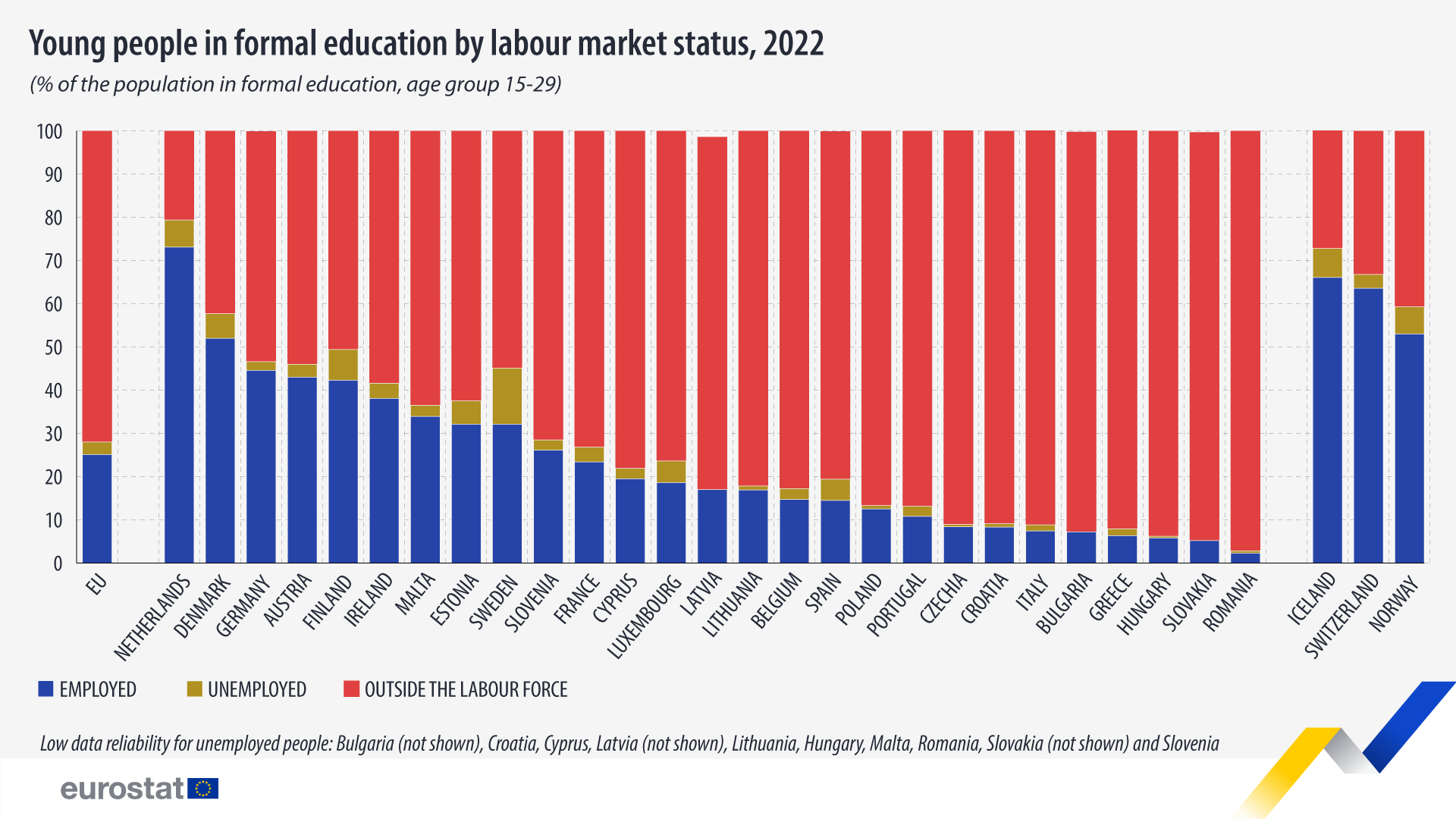October 3, 2023
In 2022, 72% of young Europeans (aged 15-29) remained outside the labour force during formal education. An additional 25% were employed, while 3% were available for employment and actively seeking employment (unemployed) while in formal education.
The dynamics of young people’s transition from formal education to the labour market varies significantly among EU countries. These disparities can be influenced by national education systems, availability of training, labour market characteristics, and cultural factors.
Despite a quarter of young Europeans being employed while studying, this statistic conceals substantial national differences. At the national level, the highest shares of young people employed during formal education were observed in the Netherlands (73%), Denmark (52%), and Germany (45%). In contrast, Romania (2%), Slovakia (5%), and Hungary (6%) reported the lowest shares.
The highest shares of young people in formal education who are available for employment and actively seeking employment were recorded in Sweden (13%), Finland (7%), and the Netherlands (6%). Conversely, Hungary, Czechia, Romania, Croatia, Poland, and Lithuania had less than 1% of young people (aged 15-29) seeking employment while at the same time having among highest shares of students outside labour force.
Gender Differences
In 2022, the participation rates of women in formal education continued to surpass those of men across all age groups, with the most significant discrepancy occurring in the 20-24 age group (54% women compared with 45% men).

Women also exhibited a higher likelihood of remaining outside both education and the labour force. These gender disparities persisted across all age groups, with the most pronounced differences recorded among young people aged 25-29. In this group, 15% of women and 7% of men were outside both education and the labour force.
Source: Eurostat
Legal Notice: The information in this article is intended for information purposes only. It is not intended for professional information purposes specific to a person or an institution. Every institution has different requirements because of its own circumstances even though they bear a resemblance to each other. Consequently, it is your interest to consult on an expert before taking a decision based on information stated in this article and putting into practice. Neither Karen Audit nor related person or institutions are not responsible for any damages or losses that might occur in consequence of the use of the information in this article by private or formal, real or legal person and institutions.







